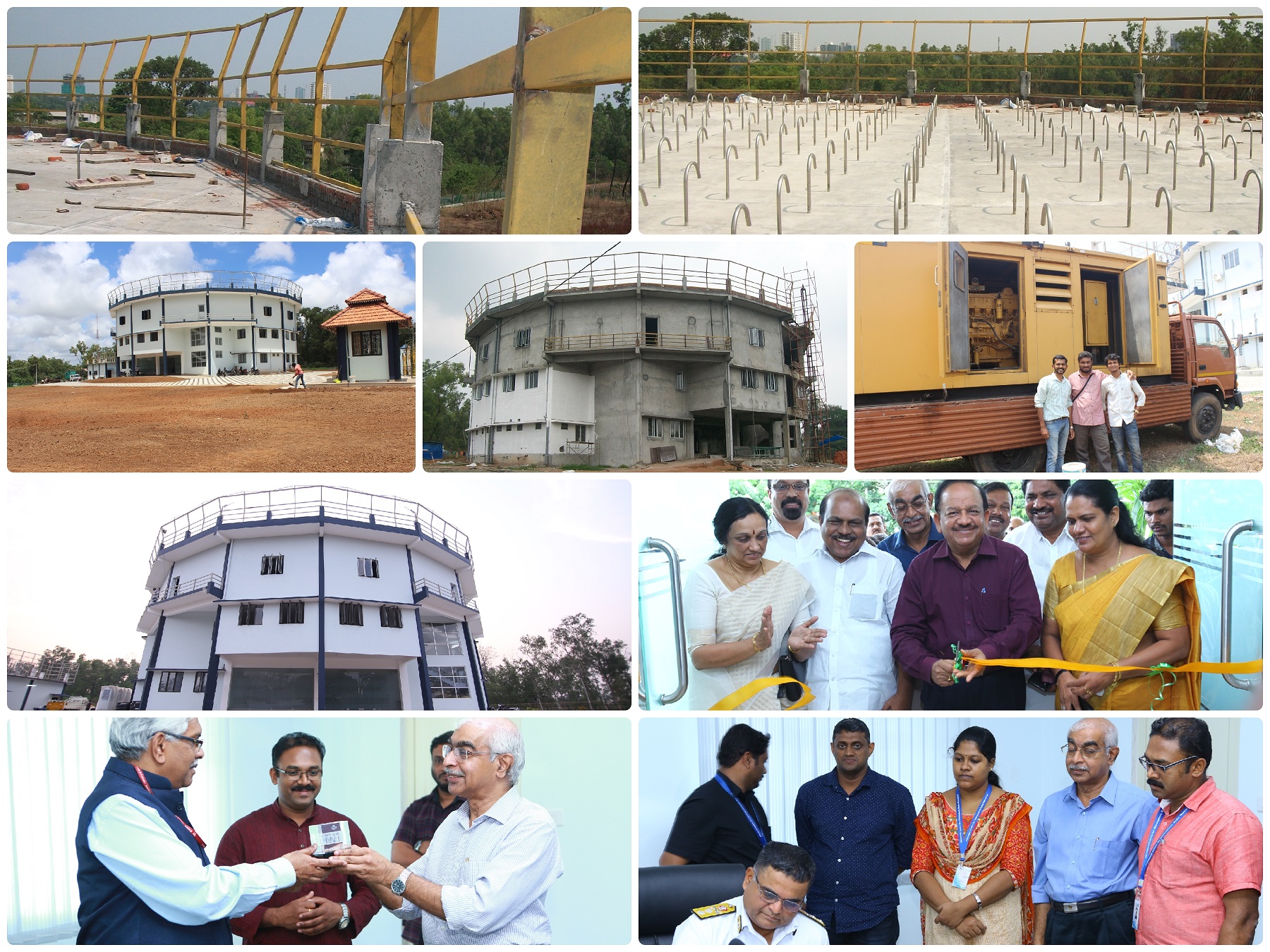History of ACARR
The Government of India proposed a vision plan to establish a network of radars in the country to improve weather forecasting skills and understand the physical and dynamical processes of the effect of climate change on the weather systems. Accordingly, Cochin University of Science and Technology (CUSAT) submitted a proposal to establish a sophisticated 205 MHz VHF Stratosphere Troposphere (ST) radar at Cochin to the Department of Science and Technology, Government of India, under its Intensification of Research in High Priority Area (IRHPA) scheme to study the characteristics and dynamics of Indian summer monsoon at its gateway at Cochin.
A grant of Rs. 25.00 crores was sanctioned for this project in 2011, the highest grant given by DST/SERB to a state-funded university in India.
The 205 MHz (~1.46 m wavelength) ST Radars are state-of-the-art systems to probe the Earth’s atmosphere from the lower level (315 m) beyond the 20 km range in the vertical. This unique frequency band has got the upper hand over the conventionally used radars in the sense that it enables us to probe the atmosphere with a much clearer signal without loss of data close to Earth’s surface, which other radars fail to explore. This advanced radar system at CUSAT is fully designed, developed, and installed, and indigenously. It is the first atmospheric radar operating successfully in the 200 MHz frequency range. The CUSAT ST Radar became fully operational in December 2016. Since then, continuous observations have been available.
The Ministry of Earth Sciences, Govt. of India providing sustenance support to this national facility for the last three years, which is likely to be continued. Several fascinating studies were conducted in the previous five years utilizing the ST Radar at Cochin with the co-located current weather observational facilities. More than 50 research publications in high-impact journals and five doctoral theses were produced using the ST Radar observations. The ST Radar at CUSAT is a multi-purpose radar, which can be utilized for operational and research purposes in weather and climate sciences, strategic applications, space weather, radio astronomy, and several other purposes.

